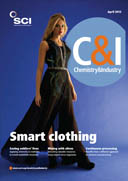A new UK endeavour is using technology developed for astronomy to predict and monitor the progression of major diseases, such as cancer, and use this information to personalise therapies to a patient’s unique condition.
With a £1.7m Medical Research Council grant, a multidisciplinary consortium, based at the Harwell campus in Oxford – home to the Central Laser Facility, and a national facility for microscopy – is to develop an imaging technology to observe individual molecules inside living cells, and living cells inside organisms, at ultra-high definition and in 3D.
Each person reacts differently to a treatment, such as a cancer drug. Monitoring how a patient’s cells change on taking a drug could allow doctors to predict which patients will respond, or who may develop resistance.
Currently, techniques such as fluorescent imaging can show big chunks of cells at a low resolution, down to half a micron, explains project leader Marisa Martin-Fernandez. This gives a certain amount of information, but not the whole picture: ‘It’s like knowing how many stations there are in the London Underground, but not how they connect.’
But the team’s single molecule imaging technique allows the researchers to look at individual molecules with a resolution of a few nm and build pictures of cells with tens of nm of resolution. Martin-Fernandez says: ‘Such great specificity allows us to focus in very high detail on the workings of molecules, and how the dynamics change when a drug is administered. What we would like to achieve is like a map of the London Underground with all the trains moving so we know where any train is headed at a particular time.’
To achieve single molecule imaging, the team engineered a fluorescence microscope to detect the very faint signals from a protein labelled with a fluorescent molecule. ‘You can follow the movement of these proteins as they go about their business in the cells,’ explains Martin-Fernandez. ‘It is a bit like following the progress of a comet as it moves in the sky, but with many, many comets at the same time, each detected as an individual particle, some crashing into each other to form larger complexes, some stopping, some accelerating.’
Martin-Fernandez says it has taken 10 years to translate astronomy know-how for medical research. The plan is now to include the adaptive optics techniques used to remove the ‘twinkle’ of a star caused by atmospheric distortion to create clearer images at the molecular level. ‘There are some similarities between taking a picture of a whole galaxy of stars and taking a picture of molecules and cells in a body, but where stars move predictably, molecules move randomly. Also we have to keep the samples alive.’
Using new astronomical algorithms, the team will remove the blur that exists around a moving molecule in the murky environment inside cells. By knowing where a molecule has moved from, they can pinpoint each molecule at a time and – like pointillism – create an image from the ‘dots’.
Long-term, the aim is to build a cell model involving hundreds of proteins. Comparing a patient’s cells with the model could highlight the cocktail of drugs best suited to the patient. The team also wants to measure changes in the patient’s cells over time, allowing them to re-tune medication. Ideally, the model could also predict resistance to drugs.
Besides the personalised medicine project, the grant will also provide an instrumentation platform for 14 other projects, including understanding the molecular basis of deafness and screening ageing populations for eye pathologies.
Stephen Holgate, clinical professor of immunopharmacology at Southampton University, UK, is impressed: ‘The idea of viewing the complexity of cell function as a mini-universe is inspiring. I am certain that the same mathematical principles will operate just as well in the micro-universe/world as in the macro-universe.’
Ray Hill, visiting professor of pharmacology at Imperial College London, UK, comments: ‘Some of what they are doing is, to my knowledge at least, novel but the mathematical techniques used by astronomers to extract signal from noise have been used in biology for at least 10 years. I think the take home message is that we make progress today by combining the skill sets of those in the biological and physical/mathematical sciences and that the barriers between disciplines are being removed to everyone’s benefit.’





